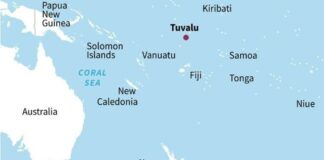FOR MANY western commentators, China is the saviour of the ailing world economy. However the hellish pace of China’s growth is being achieved at enormous human and environmental cost, explains Adrian Skerritt
The government in Beijing is indifferent to how its market reforms are destroying lives. But the very forces it has unleashed are likely to undermine the boom itself.
Growing at an average of 10 per cent over the last 16 years, the economy is now worth $2 trillion-that’s nine times larger than in 1978. This growth has a produced a huge social transformation. Between 1978 and 2003 per capita income rose six times (although this hides great regional inequality, see below).
Chasing their share of the boom, 150 million workers have moved into Chinese cities since 1978-one of the largest migrations in world history. Between 2000 and 2006 exports quadrupled to nearly $1 trillion. And its foreign-exchange reserves, crucial to the health of the world economy, grow by $500 billion a year.
China is a net manufacturing exporter, flooding markets with cheap goods. It is also a massive consumer of raw materials such as iron ore, coal and gas. As a result, it recently surpassed Japan as Australia’s biggest trading partner (although Japan still buys more of Australia’s exports).
But whether China is a miracle economy unaffected by the turmoil in the global economy is debatable. For years the cheap goods from China held global inflation down but as domestic inflation rises and higher raw-materials prices add to costs, there’s evidence that China is now beginning to export inflation.
In May 2007, the price of Chinese products imported by the U.S. registered a 0.1 per cent year-on-year increase, the first such gain since the U.S. Department of Labor began tracking Chinese import prices in 2005. Prices have climbed by at least 0.3 per cent each month since then.
The Chinese government has increased interest rates five times in 2007 in an effort to cool the economy. In August 2007 with inflation on the rise, the government took the unusual step of freezing all state-controlled prices, including those for gasoline, water and electricity.
Growing pains
In the short-term, there are four factors that could disrupt the boom: labour shortages, declining productivity, non-performing loans and inflation.
Despite the large numbers of illegal workers migrating to the cities, in some areas, labour shortages are threatening to destabilise production. The Pearl River Delta in Guangdong province, probably the most dynamic industrial region in the world, is one example.
Many factory owners have been forced to increase wages to keep their workforce. Bosses now have to pay $200 a month to hire an assembly worker, nearly double the wage of two years ago.
But this does not mean these workers are benefiting. The soaring cost of living in industrial towns like Dongguan and Shenzhen is making life impossible for many migrant workers.
Having to work a 12 hour day and live in a factory dormitory with 15 other workers has prompted many migrant workers to return to their home province to be with their family. The exodus has been so great that more 1000 factories have moved out of the Shenzhen/Dongguan region last year because of labour shortages.
Secondly, low productivity is undermining attempts to speed up accumulation. Outside Guangdong, Chinese industry is plagued by chronic inefficiency, especially in State Owned Enterprises (SOE). Even though privatisation has cut the number of SOEs from 300,000 in 1995 to 150,000 in 2005, labour productivity is just four per cent of US firms in these enterprises.
Inefficient SOEs are at the heart of a third problem: A brewing banking crisis. They are the largest recipient of loans, owing the banks more than $2 trillion. There is real doubt about the capacity of the SOEs to pay much of this back. Non-performing loans already amount to $900 billion-and it is likely that the state deliberately hides the true state of this financial exposure.
Finally, fast growth combined with inefficient industry is contributing to growing inflation, which hit 8.7 per cent in February. Food prices, which make up a third of the Consumer Price Index, rose 23 per cent, pork by 63 per cent, vegetables by 46 per cent and cooking oil by 41 per cent.
High inflation terrifies the regime-and for good reason. Sharp price rises preceded the Tiananmen Square protest in 1989. Last year, authorities accused instant-noodle makers of illegally conspiring to raise prices. President Hu Jintao has spent the last nine months visiting poor areas and calling for more moderate prices.
The sub-prime crisis in the US can only make these problems worse. Twenty per cent of Chinese exports are sold in the US and Chinese banks act a creditor to western consumers by accumulating US Treasury Bonds.
No-one is exactly sure how exposed China is. Some economists argue China has “decoupled” from the West and that it will continue to grow even if the US dives into a recession.
But, even if China continues to expand over the next period, there can be little doubt that recession in the West would impact on Chinese growth and make the regime’s problems that much worse. The US is China’s number one export market and a lengthy slowdown there would inevitably weigh on the Chinese economy.
Horrors of capitalism
China’s boom demonstrates that capitalist development is built upon social dislocation and environmental destruction. It has created great regional inequalities. For example, annual per capita income in the southern province of Guizhou is $1,257-compared to $15,000 in Shanghai.
In the mountainous regions of western China, many villagers must survive on the extreme-poverty wage of $100 a year. Compare this to China’s 300,000 millionaires: Four hundred individuals have now amassed more than $60 million each.
The boom has also created environmental destruction. Acid rain falls on one third of China’s agricultural land.
While the scale is staggering, environmental destruction is a feature of newly industrializing capitalist societies.
Karl Marx’s collaborator Frederick Engels described Manchester in 1844, in the later stages of England’s industrial revolution, “Above the bridge are tanneries, bone mills and gas works from which all drains and refuse find their way into the Irk [river] which receives further the contents of all the neighbouring sewers.” This description could be applied to any city in China today.
The boom has generated toxic air pollution, killing 400,000 people a year. At least 90 per cent of China’s 660 cities have polluted water. By this summer Lake Tai, China’s third biggest lake, is forecasted to be completely infested with algal blooms. This is expected to cut water supply to two million residents.
Global warming threatens to make thing far worse. Climate experts at the IPCC estimate that for every one per cent rise in average global temperature, Chinese rice production will fall by 10 per cent.
The boom has also created waves of impoverished migrant workers, unable to find permanent work in the cities. Twenty-four million people enter the workforce each year. There are already 235 million workers unemployed and a further 140 million construction labourers constantly on the move across the country in search of new building projects.
Working class democracy
Much Western commentary talks of the need for western-style democracy. But this is often nothing more than a demand for greater free market reforms. The best hope for democracy in fact lies in the struggles among the millions of workers across the country for social and economic change.
By 2006 the Chinese working class numbered 764 million, with 283 million living in the cities.Bitter labour disputes, anger at rising food prices and pollution have taken a growing number of people onto the streets.
In 1994 an estimated 740,000 joined street demonstrations. By 2004 the number rose to 3.7 million. Strikes rose from 1,909 in 1994 to 22,600 in 2003 and the number of strikers has grown from 77,704 to 800,000.
In 2004 China Labour Bulletin noted that, despite the growing number of strikes, they remained isolated. Some won concessions but most were crushed. In the last four years, however, workers have started to take coordinated action, in which several factories in an industrial area strike together. For example, 30,000 workers in over a dozen factories in the Dalian Development Zone struck in 2005.
China’s boom has relentlessly restructured the bureaucratic state capitalism of the regime. In the process it has created a powerful working class as millions of people are drawn people together into factories, mines, ports and offices. But as Marx explained, the working class is not only the source of the wealth of capitalism, it is also its potential gravedigger.
China’s boom may seem spectacular to western capitalists hungry to cash in on its growth. But it has left the majority of its 1.3 billion people behind.
There are huge reservoirs of anger across the country from the factories of Shenzhen to the streets of Lhasa. This anger could yet explode as inflation continues to rise or the army shoots unarmed demonstrators.





